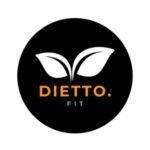Eating Disorders
Our Solutions
- Sports Nutrition
- Renal Nutrition
- Oncology Nutrition
- Corporate Nutrition
- Cardiovascular Disease Diet
- Therapeutic nutrition
- Naturopathy
- Gerontology and geriatric
- Pediatric nutrition
- Gastrointestinal (GI) disease nutrition
- Liver and pancreas
- Pancreas Health and Nutrition
- Obesity and underweight nutrition
- Infections and fevers nutrition
- Anaemia nutrition
- Pre and post pregnancy nutrition
Health Conditons

Eating Disorders
It’s a serious mental health conditions characterized by abnormal eating habits, distorted body image, and unhealthy behaviours related to food and weight. They can affect individuals of any age, gender, or background and have significant physical, emotional, and social consequences. Early detection, intervention, and treatment are crucial for recovery from eating disorders.
Anorexia Nervosa: Anorexia nervosa is characterized by an intense fear of gaining weight and a distorted body image, leading to restrictive eating behaviours and excessive weight loss. Individuals with anorexia may severely limit their food intake, engage in excessive exercise, and exhibit obsessive behaviours related to food and weight control. They may also experience physical symptoms such as extreme weight loss, fatigue, dizziness, and hair loss.
Bulimia Nervosa: Bulimia nervosa involves cycles of binge eating followed by compensatory behaviours such as self-induced vomiting, laxative or diuretic abuse, fasting, or excessive exercise to prevent weight gain. Individuals with bulimia often feel a lack of control over their eating during binge episodes and experience feelings of guilt, shame, and distress afterward. They may also exhibit signs of dental erosion, electrolyte imbalances, and gastrointestinal issues due to purging behaviours.
Binge Eating Disorder (BED): Binge eating disorder is characterized by recurrent episodes of binge eating, during which individuals consume large amounts of food in a short period and feel a lack of control over their eating. Unlike bulimia, individuals with BED do not engage in compensatory behaviours, such as purging or fasting, after binge episodes. They may experience feelings of guilt, embarrassment, and distress about their eating habits and may be at risk of obesity and related health complications.
Nutrition helps individuals with eating disorders in some ways:
Restoring Physical Health: Many individuals with eating disorders suffer from malnutrition and nutritional deficiencies due to restrictive eating patterns or purging behaviours. Proper nutrition is essential for restoring physical health, replenishing depleted nutrients, and addressing any medical complications associated with the disorder. A balanced diet supports the body’s physiological functions, including organ function, bone health, hormonal balance, and immune function.
Weight Restoration: In cases of anorexia nervosa or severe malnutrition, weight restoration is a primary goal of nutritional therapy. Registered dietitians work with individuals to develop meal plans that gradually increase caloric intake to achieve a healthy weight range. This process is carefully monitored to ensure that weight gain occurs at a safe and sustainable pace, minimizing the risk of refeeding syndrome or other complications.
Normalizing Eating Patterns: Eating disorders often disrupt normal eating patterns, leading to irregular meal timing, food avoidance, or binge-purge cycles. Nutrition therapy helps individuals establish regular, balanced eating habits by reintroducing structured meals and snacks throughout the day. Learning to eat consistently and adequately nourish the body is essential for restoring metabolic health and regulating hunger and satiety cues.
Addressing Food Fears and Distortions: Many individuals with eating disorders have distorted beliefs and fears surrounding food, such as categorizing foods as “good” or “bad,” fearing certain food groups, or feeling guilt or shame about eating.
Promoting Body Acceptance: Nutrition therapy fosters body acceptance and positive body image by emphasizing the importance of nourishing the body at any size or shape. Rather than focusing solely on weight or appearance, the emphasis is placed on health-promoting behaviours, self-care, and holistic well-being. Learning to appreciate and respect one’s body is integral to the recovery process and supports long-term maintenance of healthy eating habits.
Building Skills for Relapse Prevention: Nutrition education equips individuals with practical skills and strategies for preventing relapse and maintaining recovery beyond treatment. This may include meal planning, grocery shopping guidance, mindful eating practices, and coping mechanisms for managing triggers or stressful situations. Nutritionists collaborate with other members of the treatment team to address underlying psychological factors contributing to the eating disorder and develop comprehensive relapse prevention plans.
Thanks for the great service. I didn’t even need training. I love fitness. Fitness impressed me on multiple levels.
– William Blake
Our Services Benefits

Schedule Exercise
- Personalized guidelines based on your biological needs and unique circumstances.
- Simple, practical tips and advice to help you achieve your nutritional needs.
- Advice on ways to deal with weight loss, fatigue, and nausea brought on by illness or treatment side effects.
- Plans for families or caregivers in support of your nutritional needs.
- Recipes, lists of foods, dietary supplements, and vitamins.

- clear-fluid diets
- full- fluid diets
- soft diets
- regular normal diets
- oral supplements
- tube feeding
- high fibre diet
- Alkaline-ash diet
- Sodium restricted diets
- Moderate to low fat diet
- High carbohydrate diet
- High caloric fluid and soft diet
